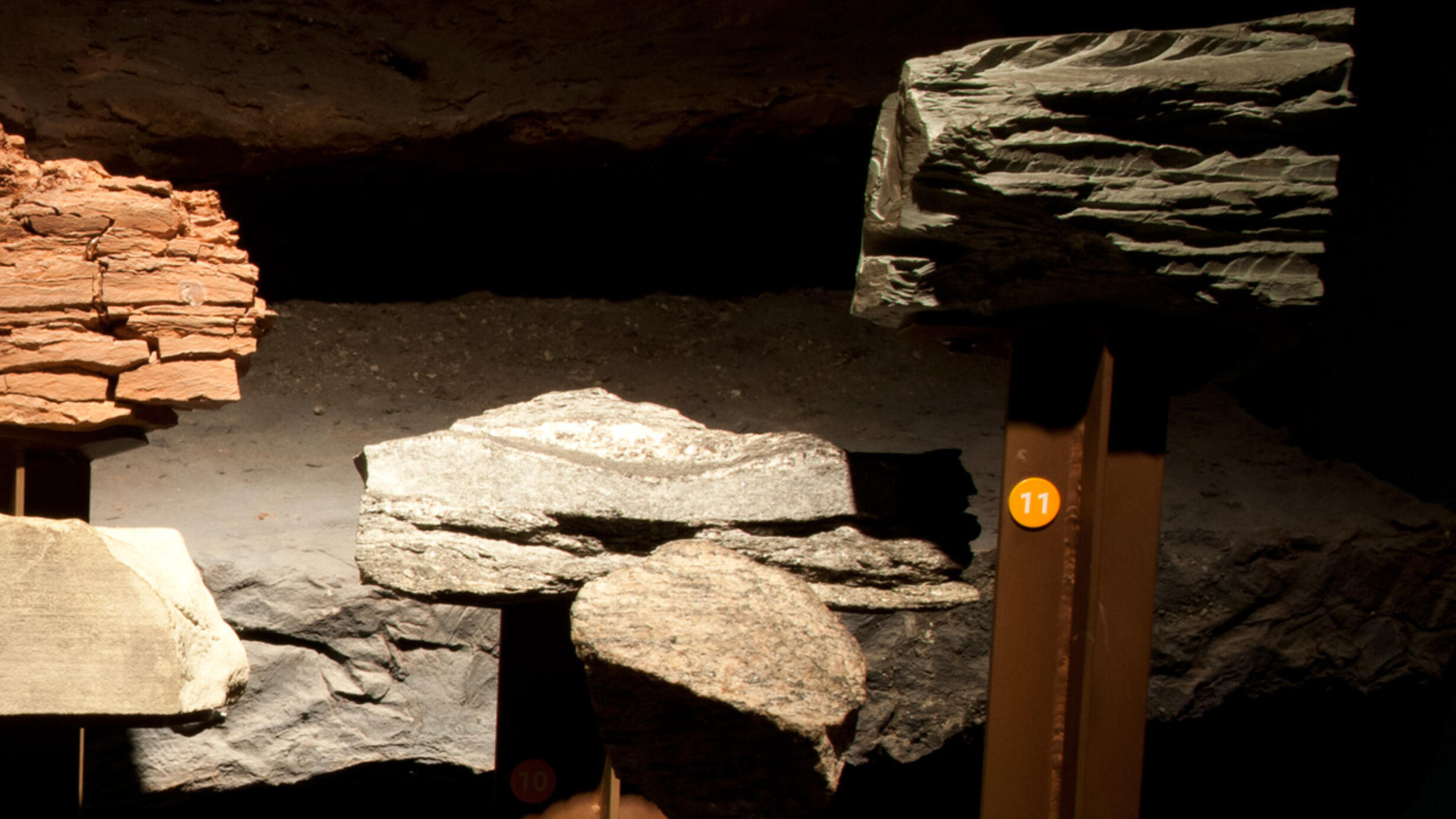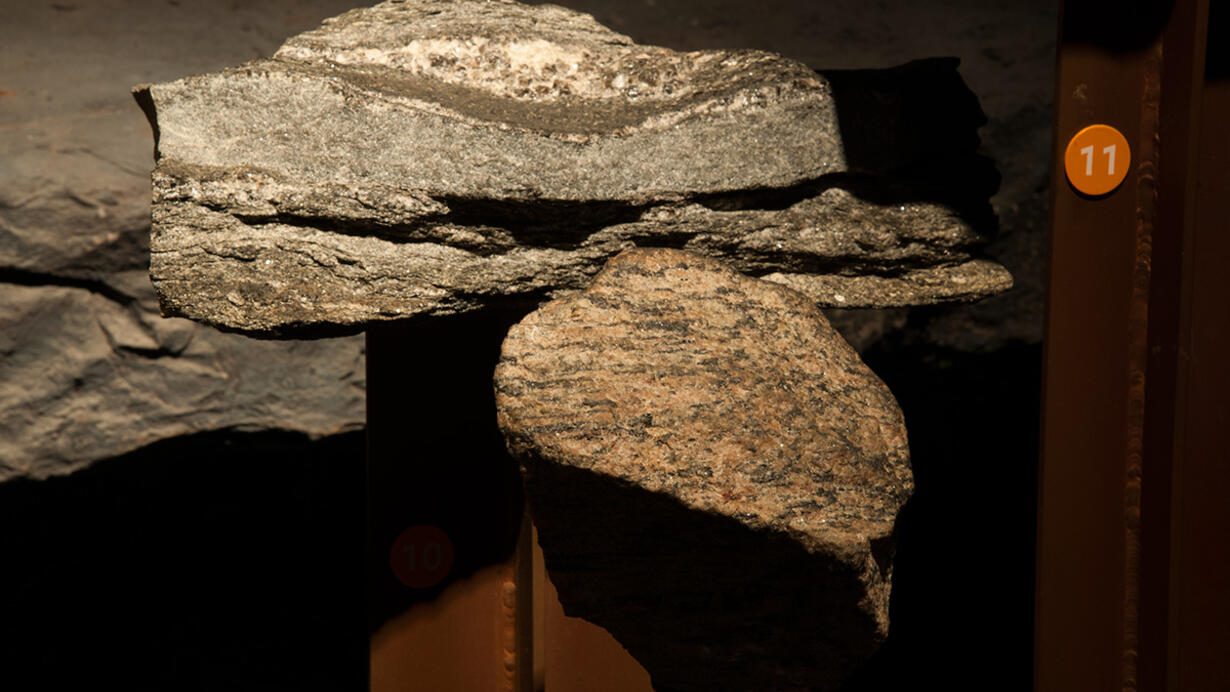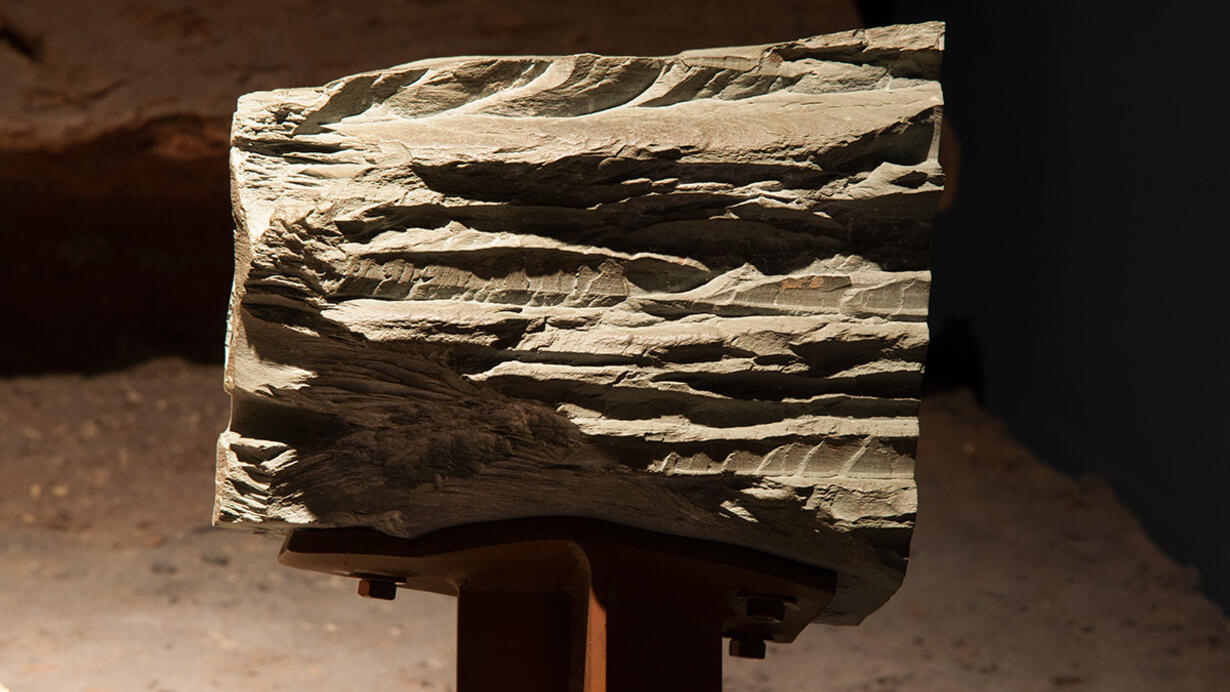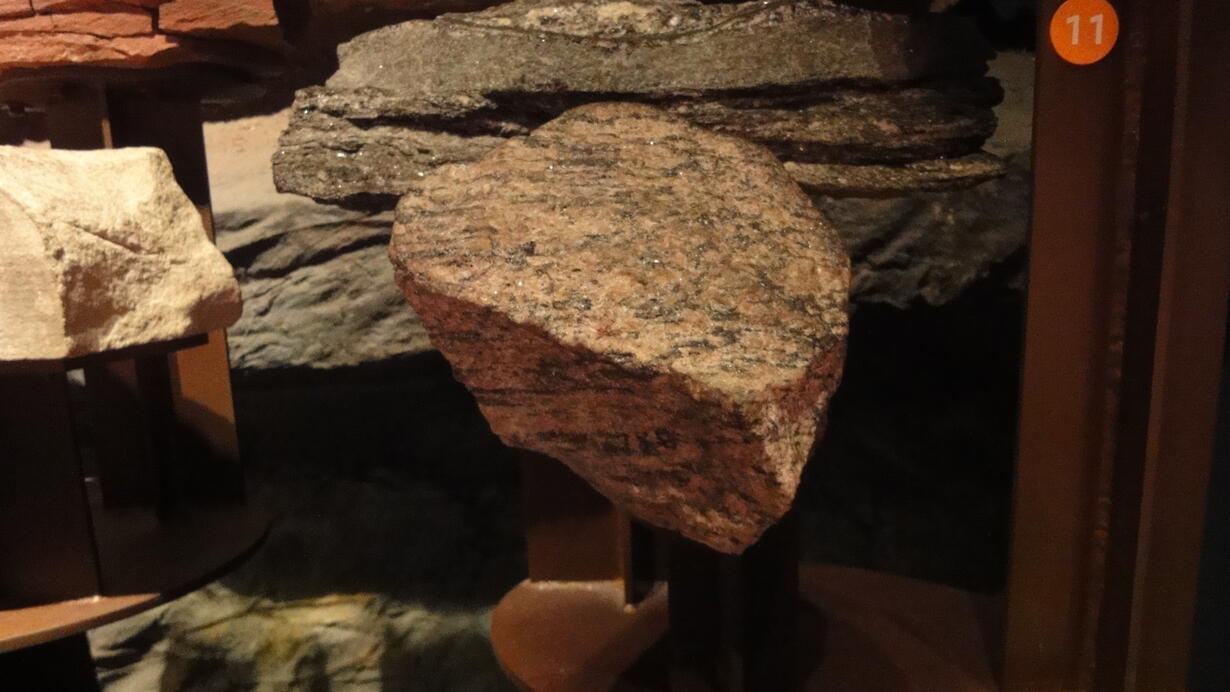Metamorphic Rocks
Part of Hall of Planet Earth.
 AMNH/R.Mickens
AMNH/R.Mickens Metamorphic rocks form when sedimentary, igneous, or pre-existing metamorphic rocks are changed by heat, pressure, and chemically reactive waters. These rocks are identified by their minerals and texture.
During metamorphism, new minerals grow, with different sizes, shapes, and orientations than those of the original minerals. The chemical composition of the original rock may also change, as some elements are carried away and others are added by the fluids flowing through the rocks.
In This Section

Manhattan Schist
Originally a shale, this schist now consists of dark, biotite-rich layers and finer-grained, light-colored layers made of gray quartz and white orthoclase. The distinct layering developed perpendicular to the direction of compression. This schist underlies most of Manhattan.

Slate
This slate was also once a shale. Because the shale was metamorphosed only slightly, its textures changed little. This sample is from the Grenville slate, widely used for roofing.
Provided by Vermont Structural Slate Company, Grenville, New York.

Gneiss
This rock was once a granite. As it was deformed by heat and pressure, the original even-grained rock developed dark layers, primarily biotite, and light layers, mostly gray quartz, pink orthoclase, and black hornblende.